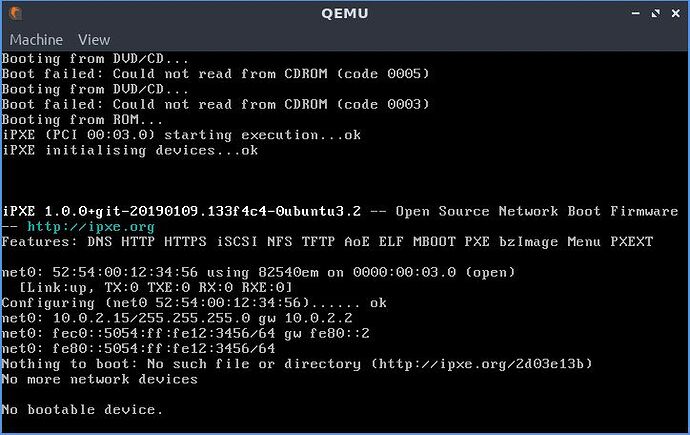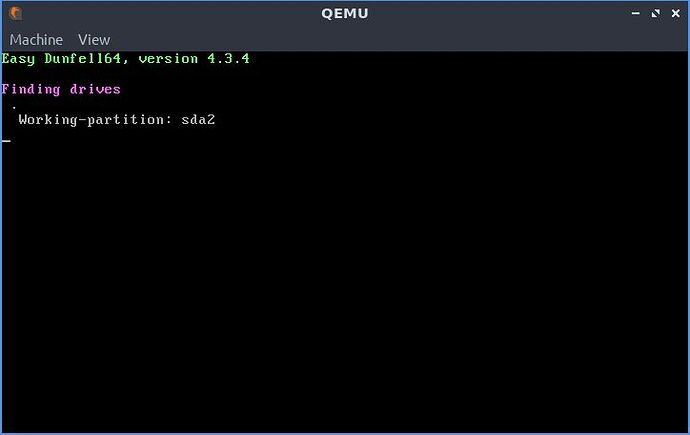Yes, the message means it cant find initrd
So grub-imagemounter has tried to make a custom 60_custom file, and failed
Can you not do it the same way as you did to specify the usb drive?
I seems not .
In virt-manager´s settings I accomplished it with “add host usb device”. Here the stick was listed of course.
But not any host´s loop device.
Basically what needs to be done is make the loop device appear as a usb device. But I´ve no idea whether that could be done …
I see. I thought you were just typing in the device name, but you are using a menu in virt-manager
Maybe you could go back to using qemu at the command line?
I finally understand that loop mount now,
/dev/loop0 is whole disk ( like sda)
that unnamed partition is the mbr
/mnt/rosika/easy2 is the partition with EasyOS on it (like sda1)
So you need to specify /dev/loop0 to qemu, not the /mnt…
Gee I am slow sometimes.
I need to learn qemu for my own use, so I will some experiments
Regards
Neville

